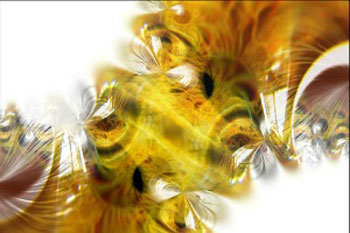| Jul 11, 2012 |
Novel fabrication techniques for gold nanoparticles research
|
|
(Nanowerk News) Curtin University chemistry researchers have confirmed the viability of advanced metal nanoparticle creation techniques, bringing the development of new nanotechnology a step closer.
|
|
For the last 10 years gold nanoparticle (AuNP) researchers have been putting a macroscopic piece of gold in water and blasting it with a high powered infrared photo laser. This obliterates it to nanoparticles directly in water, then with green light to further fragment them—depending on final required size.
|
|
Head of Chemistry Department Professor Mark Buntine says the problem is AuNP have large surface areas compared to their volume as they are so small (5–200 nm or about 20,000 atoms per 5nm), so their surface is in a very high energy state.
|
 |
| “If you’ve just got AuNP on their own in water their outside surface is highly charged (high energy state) and particles don’t like being in a high energy state.” Mark Buntie
|
|
“If you’ve just got AuNP on their own in water their outside surface is highly charged (high energy state) and particles don’t like being in a high energy state,” he says.
|
|
“Over the course 24–48 hrs those particles will start to stick together and precipitate out of the solution.”
|
|
To counteract this, chemists put a surfactant in the solution that they want nanoparticles to stick to, similar to coating chocolate with sugar—like M&Ms.
|
|
The nanoparticles are electrically attracted to the surfactant and together they exist in a stable state, allowing them to stay in suspension longer.
|
|
However, as you increase the concentration of surfactant molecules in the solution you eventually reach the critical micelle concentration (CMC), where the surfactant molecules embed nanoparticles inside a sphere of surfactant molecules.
|
|
AuNP have a wide variety of uses and many of them require the nanoparticles to not be in micellar form, so Prof Buntine’s research tested the likelihood of the CMC occurring during AuNP creation.
|
|
The team found micelles did not form in the initial laser phase but did during the green light fragmentation phase, giving scientists a better idea of what techniques to use to make nanoparticles with the necessary size and properties.
|
|
Prof Buntine says scientists are now moving away from surfactants into using compounds that will have direct applications.
|
|
Examples include using molecules to transfer solar energy into nanoparticles, which get excited and are able to change the light frequency to produce more efficient solar cells; or using sugar molecules to make them more compatible in biological systems for medical applications.
|
|
“We haven’t really been able to think about these applications without first doing the comprehensive mechanistic understanding behind how they work, are formed and are stabilised,” he says.
|

